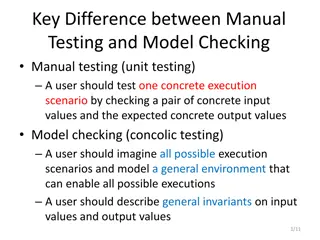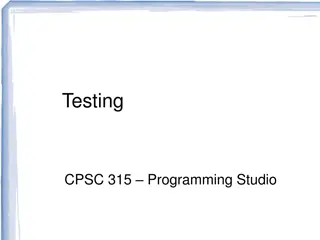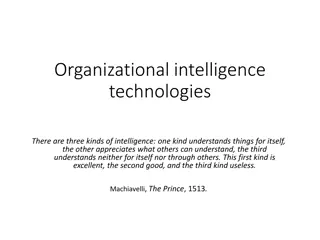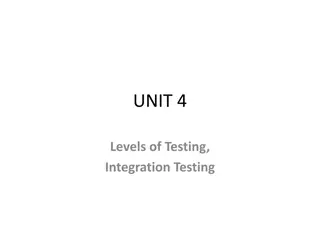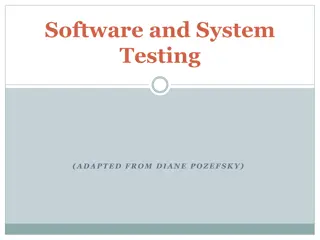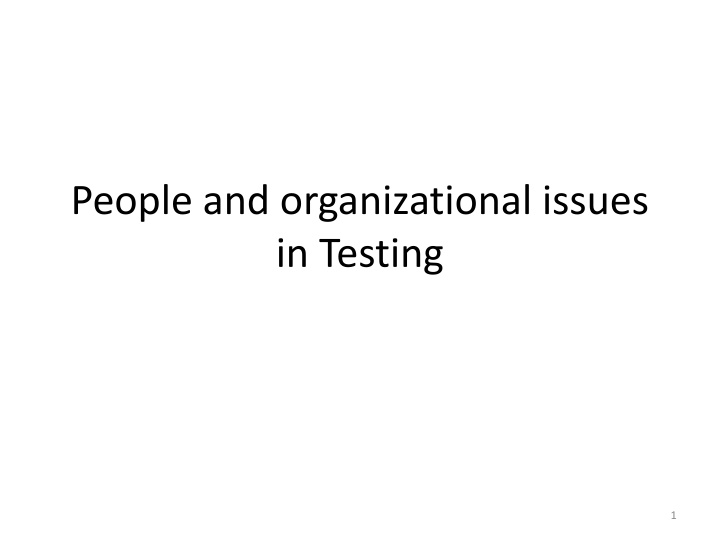
People and Organizational Issues in Testing: Understanding Cognitive Limitations
Explore the importance of managing people in software engineering, including activities like problem-solving, motivating, and organizing. Learn about cognitive limitations in the software process and how they impact individuals. Discover the role of motivation and different types of motivators in project management.
Download Presentation

Please find below an Image/Link to download the presentation.
The content on the website is provided AS IS for your information and personal use only. It may not be sold, licensed, or shared on other websites without obtaining consent from the author. If you encounter any issues during the download, it is possible that the publisher has removed the file from their server.
You are allowed to download the files provided on this website for personal or commercial use, subject to the condition that they are used lawfully. All files are the property of their respective owners.
The content on the website is provided AS IS for your information and personal use only. It may not be sold, licensed, or shared on other websites without obtaining consent from the author.
E N D
Presentation Transcript
People and organizational issues in Testing 1
People in the process People are an organisation s most important assets The tasks of a manager are essentially people oriented. Unless there is some understanding of people, management will be unsuccessful Software engineering is primarily a cognitive activity. Cognitive limitations effectively limit the software process 2
Management activities Problem solving (using available people) Motivating (people who work on a project) Planning (what people are going to do) Estimating (how fast people will work) Controlling (people's activities) Organising (the way in which people work) 3
Limits to thinking People don t all think the same way but everyone is subject to some basic constraints on their thinking due to Memory organisation Knowledge representation Motivation influences If we understand these constraints, we can understand how participating in the software process they affect people 4
Information transfer Problem solving usually requires transfer between short-term memory and working memory Information may be lost or corrupted during this transfer 5
Problem solving Requires the integration of different types of knowledge (computer, organisation) Development of a semantic model of the solution and testing of this model against the problem Representation of appropriate notation language task, domain, this model or in an programming 6
Motivation An important role of a manager is to motivate the people working on a project Motivation is a complex issue but it appears that their are different types of motivation based on Basic needs (e.g. food, sleep, etc.) Personal needs (e.g. respect, self-esteem) Social needs (e.g. to be accepted as part of a group) 8
Motivating people Motivations depend on satisfying needs It can be assumed that physiological and safety needs are satisfied Social, esteem and self-realization needs are most significant from a managerial viewpoint 10
Group composition Group composed of members who share the same motivation can be problematic Task-oriented - everyone wants to do their own thing Self-oriented - everyone wants to be the boss Interaction-oriented - too much chatting, not enough work An effective group has a balance of all types Can be difficult to achieve because most engineers are task-oriented Need for all members to be involved in decisions which affect the group 12
Group leadership Leadership depends on respect not titular status There may be both a technical and an administrative leader Democratic leadership is more effective that autocratic leadership A career path based on technical competence should be supported 13
Developing cohesiveness Cohesiveness is influenced by factors such as the organisational culture and the personalities in the group Cohesiveness can be encouraged through Social events Developing a group identity and territory Explicit team-building activities Openness with information is a simple way of ensuring all group members feel part of the group 15
Group loyalties Group members tend to be loyal to cohesive groups 'Groupthink' is preservation of group irrespective of technical or organizational considerations Management should act positively to avoid groupthink by forcing external involvement with each group 16
Staff selection factors 17
Working environments Physical workplace provision has an important effect on individual productivity and satisfaction Comfort Privacy Facilities Health and safety considerations must be taken into account Lighting Heating Furniture 18
Environmental factors Privacy - each engineer requires an area for uninterrupted work Outside awareness - people prefer to work in natural light Personalization - individuals adopt different working practices and like to organize their environment in different ways 19
Workspace organisation Workspaces should provide private spaces where people can work without interruption Providing individual offices for staff has been shown to increase productivity However, teams working together also require spaces where formal and informal meetings can be held 20
Challenges in Testing Technical challenges: Its normally associated with the core coding aspect of software development. Its about learning the languages and the algorithms. Writing quality and maintainable code that can be scale to multiple systems used by millions of users 21
Finding and fixing logical errors, debugging bugs in code. Operational Challenges: It deals with advancement and recognition, collaboration with other engineers, product managers. Continuous education of both technical and business parts of an organization. management, career 22
Specialization has come to stay in testing career following are some of the key areas where one need to specialize to move ahead in career path in testing apart from good knowledge in software lifecycle testing process. 24
Domain Knowledge Good knowledge in domain area of the application adds value to the testing professionals. There are ever living domains like Telecom, manufacturing, embedded etc. Numbers of certifications are available for each of these areas where the tester can get them certified. Health care, 25
Automation Testing Tools Knowledge There is great demand for automation and performance testers. A good skill on scripting languages of these tools is basic necessity for succeeding in test automation. Knowledge on creation, validation and enhancement of test automation framework is very much required. 26
Certifications International), ISQTB ( International Software Testing Qualification Board ) and several other institutes are offering certifications. These certifications improve the confidence of the clients on the testing professionals. CQTM, PMP are some managerial certifications, which help the testers to scale up in the professional ladder. Certifications on the testing tools offered by vendors like HP increases the technical competency of the individual. QAI( Quality Assurance testing specific 27
Testing Misconception Misconception 1: Tests show my code is correct. We can test one possible scenario in the program Each unit Infinite number of scenarios to test Not feasible Developer and Tester Same person Finding bugs is difficult. 28
Tests are executable specifications Misconceptions 2: Tests lead to good design Testing process should be initiated after the preparation of a series of prototypes. Otherwise our tests will have to be thrown away and rewritten. Making code testable is hard. 29
Both develop and testing team should be worked in synchronization. From Day 1- Testing and developing team should involved. Software testing team overall knowledge. ( Domain Knowledge) 30
Soft skill requirements Developer Language will be decided by the nature of the project and the technology Accordingly developer will be selected. Testers: Different skills Programming knowledge knowledge. set required and domain 31








